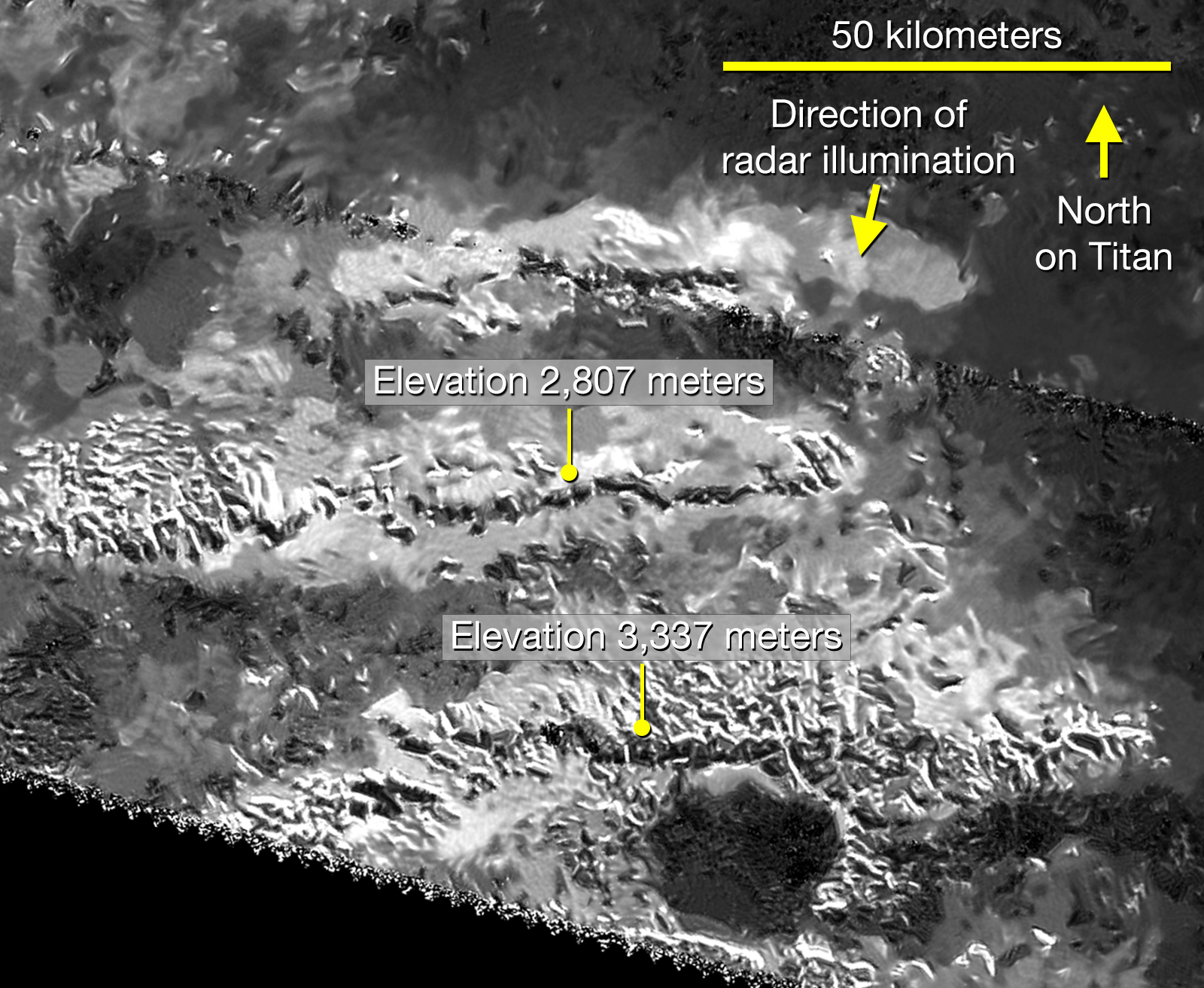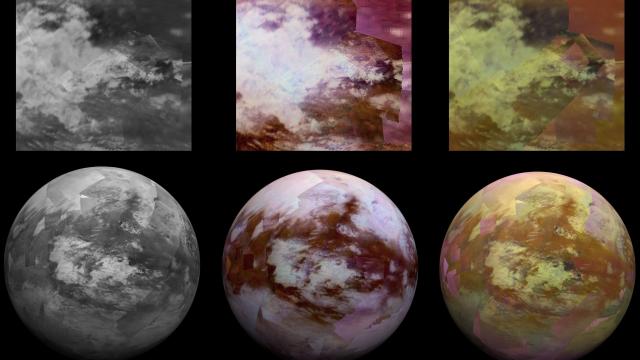If and when the space tourism industry takes off, glorious images released by NASA’s Cassini team this week. Several new infrared composites of the icy moon allow us to peer beneath its smothering haze. And if you squint a little, you can see something amazing on the surface.
Image: NASA/JPL-Caltech/ASI
There is an epic 10,948 foot (3,337 meter) ice mountain located near Titan’s equator. Discovered using the Cassini probe’s radar instrument, which bounces radio waves off the moon’s surface to measure topographic changes, the mountain sits amid a rugged trio of peaks known as the Mithrim Montes. Together, they speak to the dynamic geologic processes constantly reshaping Titan’s surface.

The Mithrim Montes, a trio of ridges on Titan, contain the moon’s highest peak. Image: NASA/JPL-Caltech/ASI
“It’s not only the highest point we’ve found so far on Titan, but we think it’s the highest point we’re likely to find,” Stephen Wall of NASA’s Jet Propulsion Laboratory said in a statement. Wall and his collaborators shared the news of Titan’s latest winter mountaineering prospect at the Lunar and Planetary Science Conference in Texas this week.
For over a decade, the Cassini probe has sailed in and out of Saturn’s ring system, snapping photos and collecting data on the gas giant and its dozens of moons. The largest of those moons, Titan, is hands-down one of the strangest places in our Solar System A bone-chilling -290 degrees Fahrenheit on the surface, you’d imagine a cold, dead wasteland. Instead, Titan is covered in frothy oceans and flowing rivers. A thick, perennially cloudy atmosphere rains methane down on the surface, sculpting ridges and valleys. And with mountain ranges that rival those on Earth, the case for tectonic activity on Titan is now stronger than ever.
Cassini’s numerous flybys have allowed us to piece together a global picture of the moon. It hasn’t been easy. Because it’s so cloudy, the only way to visualise the surface the way our eyes see things (via reflected sunlight) is in the infrared spectrum. The images at the top represent the culmination of 11 years’ worth of data, collected by Cassini’s visual and infrared mapping spectrometer between 2004 and 2015. By mapping the moon at several different wavelengths, we can more easily spot strange and intriguing places on the surface.
At this point, we’ve discovered so many intriguing places that I’m about ready to reserve myself a seat on the next rocket out.
